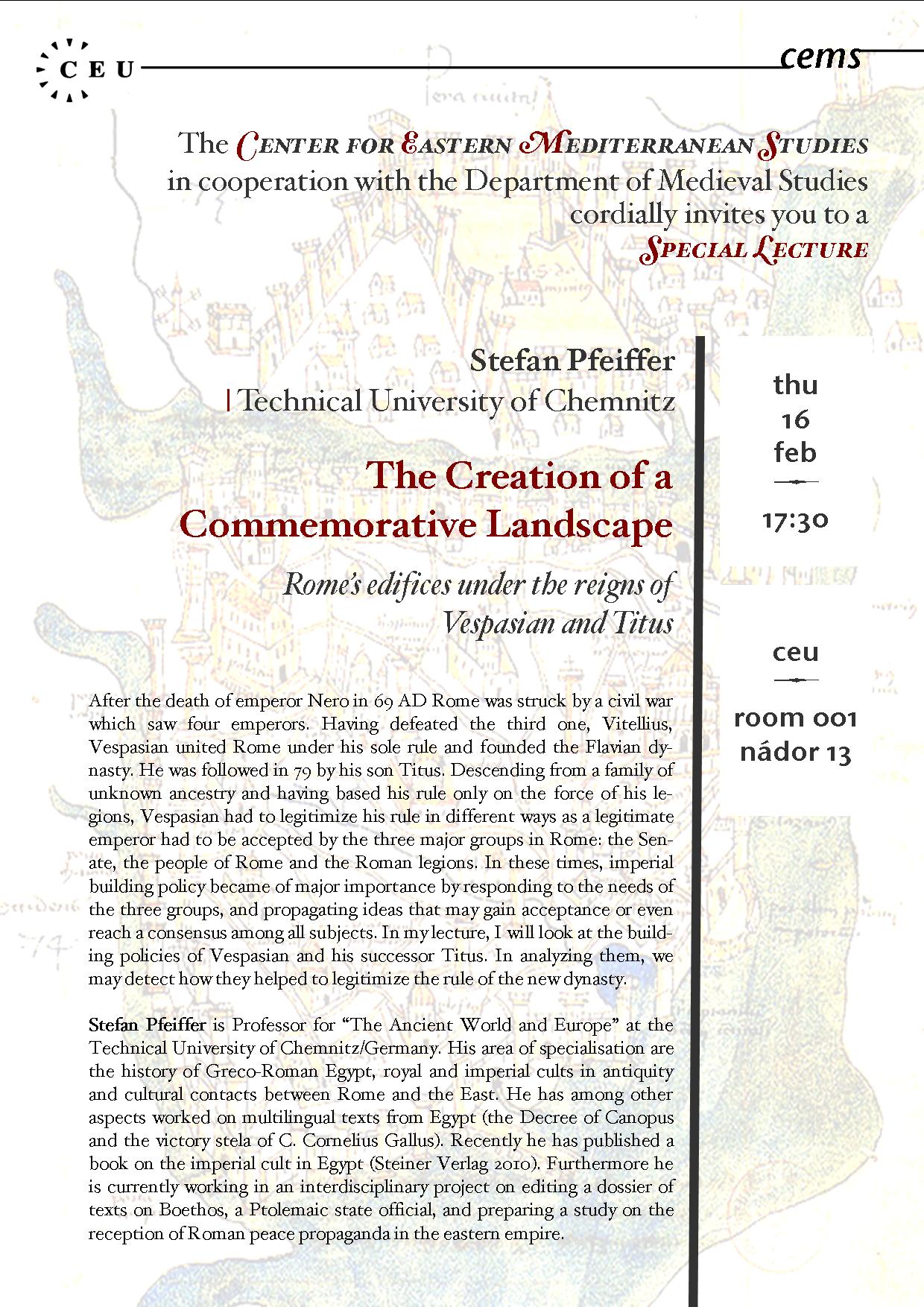After the death of emperor Nero in 69 AD Rome was struck by a civil war which saw four emperors. Having defeated the third one, Vitellius, Vespasian united Rome under his sole rule and founded the Flavian dynasty. He was followed in 79 by his son Titus. Descending from a family of unknown ancestry and having based his rule only on the force of his legions, Vespasian had to legitimize his rule in different ways as a legitimate emperor had to be accepted by the three major groups in Rome: the Senate, the people of Rome and the Roman legions. In these times, imperial building policy became of major importance by responding to the needs of the three groups, and propagating ideas that may gain acceptance or even reach a consensus among all subjects. In my lecture, I will look at the building policies of Vespasian and his successor Titus. In analyzing them, we may detect how they helped to legitimize the rule of the new dynasty.
Stefan Pfeiffer is Professor for “The Ancient World and Europe” at the Technical University of Chemnitz/Germany. His area of specialisation are the history of Greco-Roman Egypt, royal and imperial cults in antiquity and cultural contacts between Rome and the East. He has among other aspects worked on multilingual texts from Egypt (the Decree of Canopus and the victory stela of C. Cornelius Gallus). Recently he has published a book on the imperial cult in Egypt (Steiner Verlag 2010). Furthermore he is currently working in an interdisciplinary project on editing a dossier of texts on Boethos, a Ptolemaic state official, and preparing a study on the reception of Roman peace propaganda in the eastern empire.
